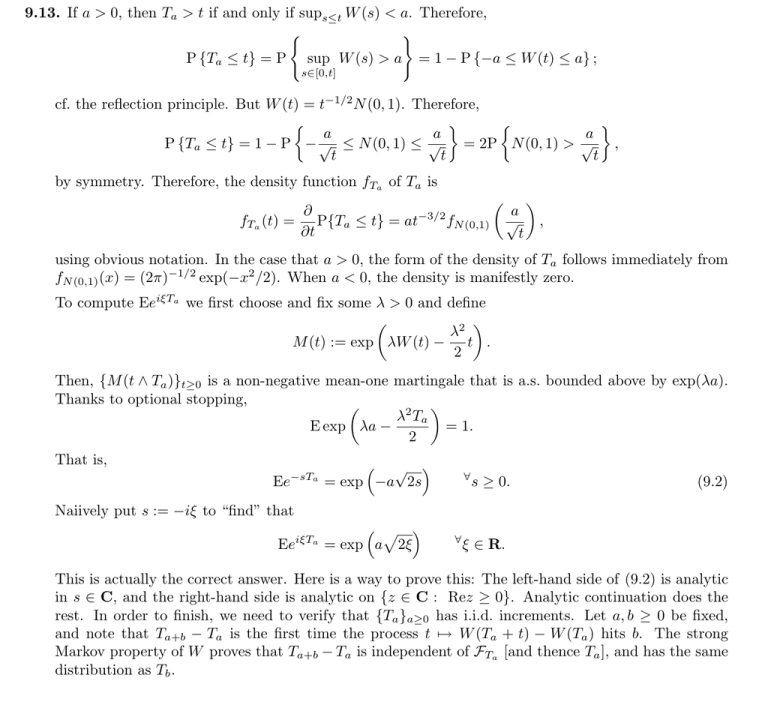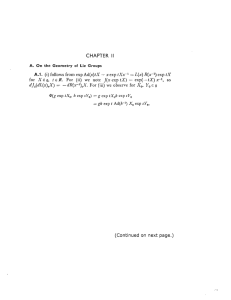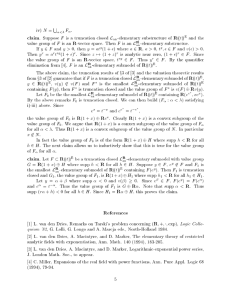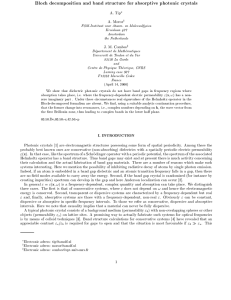p. 62 9. Brownian Motion } |W
advertisement

9.13. If a > 0, then Ta > t if and only if sups≤t W (s) < a. Therefore,
&
'
P {Ta ≤ t} = P
sup W (s) > a
s∈[0,t]
= 1 − P {−a ≤ W (t) ≤ a} ;
cf. the reflection principle. But W (t) = t−1/2 N (0, 1). Therefore,
*
+
*
+
a
a
a
P {Ta ≤ t} = 1 − P − √ ≤ N (0, 1) ≤ √
= 2P N (0, 1) > √ ,
t
t
t
by symmetry. Therefore, the density function fTa of Ta is
∂
fTa (t) = P{Ta ≤ t} = at−3/2 fN (0,1)
∂t
,
a
√
t
-
,
using obvious notation. In the case that a > 0, the form of the density of Ta follows immediately from
fN (0,1) (x) = (2π)−1/2 exp(−x2 /2). When a < 0, the density is manifestly zero.
To compute EeiξTa we first choose and fix some λ > 0 and define
,
λ2
M (t) := exp λW (t) − t .
2
Then, {M (t ∧ Ta )}t≥0 is a non-negative mean-one martingale that is a.s. bounded above by exp(λa).
Thanks to optional stopping,
,
λ2 T a
E exp λa −
= 1.
2
That is,
Ee
−sTa
Naiively put s := −iξ to “find” that
Ee
iξTa
.
√ /
= exp −a 2s
. 0 /
= exp a 2ξ
∀
∀
s ≥ 0.
(9.2)
ξ ∈ R.
This is actually the correct answer. Here is a way to prove this: The left-hand side of (9.2) is analytic
in s ∈ C, and the right-hand side is analytic on {z ∈ C : Rez ≥ 0}. Analytic continuation does the
rest. In order to finish, we need to verify that {Ta }a≥0 has i.i.d. increments. Let a, b ≥ 0 be fixed,
and note that Ta+b − Ta is the first time the process t '→ W (Ta + t) − W (Ta ) hits b. The strong
Markov property of W proves that Ta+b − Ta is independent of FTa [and thence Ta ], and has the same
distribution as Tb .







